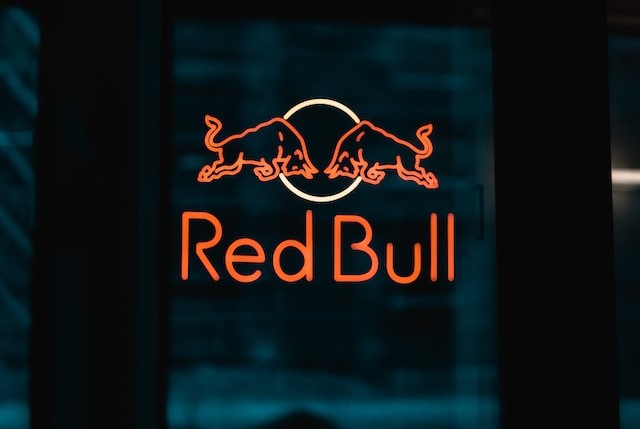Before we dive deep into the PESTEL Analysis, let’s get the business overview of Red Bull. Red Bull GmbH is an Austrian company founded in 1987 by Dietrich Mateschitz and Chaleo Yoovidhya, best known for its Red Bull energy drink. The company has since grown into a global brand, expanding its product range and venturing into various marketing and sports events.
Core Product: Red Bull’s flagship product is its energy drink, which contains caffeine, taurine, B-group vitamins, and sugars. The formula is designed to increase alertness, concentration, and energy levels. Red Bull has expanded its product line to include various flavors and sugar-free alternatives.
Market Presence: Red Bull is sold in over 170 countries, and it is the highest-selling energy drink globally, with a market share of more than 40%. The company has continued to grow, with annual sales of over 7 billion cans as of 2021.
A total of 12,138 billion cans of Red Bull were sold worldwide in 2023, representing an increase of 4.8% against a very successful 2022.
Marketing Strategy: Red Bull’s unique marketing strategy focuses on building brand recognition through extreme sports, cultural events, and innovative advertising. The company has sponsored and organized numerous events, including the Red Bull Air Race, Red Bull Cliff Diving, Red Bull Crashed Ice, and Red Bull Flugtag. Red Bull also sponsors various athletes across different sports, including Formula 1, soccer, and skateboarding.
Red Bull Marketing Strategy: Sampling & Extreme Sports
Media Presence: Red Bull has a strong media presence through its Red Bull Media House, which produces content ranging from TV shows, movies, and documentaries to print and digital media. Red Bull’s media strategy has successfully created a lifestyle brand that appeals to a broad audience, particularly in the action sports and adventure space.
Corporate Social Responsibility: Red Bull has initiated several social and environmental programs, such as the Wings for Life Foundation, which focuses on spinal cord injury research. The company also aims to reduce its carbon footprint and has implemented various sustainability measures.
Financial Performance: Red Bull generated 9.68 billion euros ($10.53 billion) in FY23, with 24% YoY growth.
Here is the PESTEL analysis of Red Bull
A PESTEL analysis is a strategic management framework used to examine the external macro-environmental factors that can impact an organization or industry. The acronym PESTEL stands for:
- Political factors: Relate to government policies, regulations, political stability, and other political forces that may impact the business environment.
- Economic factors: Deal with economic conditions and trends affecting an organization’s operations, profitability, and growth.
- Sociocultural factors: Relate to social and cultural aspects that may influence consumer preferences, lifestyles, demographics, and market trends.
- Technological factors: Deal with developing and applying new technologies, innovations, and trends that can impact an industry or organization.
- Environmental factors: Relate to ecological and environmental concerns that may affect an organization’s operations and decision-making.
- Legal factors: Refer to the laws and regulations that govern businesses and industries.
In this article, we will do a PESTEL Analysis of Red Bull.
PESTEL Analysis Framework: Explained with Examples
Political
- Regulation and Standards: Red Bull, as an energy drink, falls under the purview of regulations for beverages and food products in many countries. Any changes in these regulations can impact how Red Bull formulates its products, labels them, or advertises them.
- Taxation Policies: Countries have different taxation policies. If there is a tax hike on energy drinks or imported products, it could raise the cost for Red Bull, which might then be passed on to the consumer, potentially impacting sales.
- Trade Tariffs and Import/Export Regulations: Being an international brand, Red Bull might be impacted by changes in trade tariffs or import/export regulations. If a country where Red Bull is a big seller implements strict trade tariffs or barriers, it could impact Red Bull’s profitability in that region.
- Health and Safety Regulations: Governments may implement stricter health and safety standards for energy drinks due to their high caffeine content. This could require Red Bull to reformulate their product, change their marketing strategies, or provide additional labeling information.
- Political Stability: Political instability in countries where Red Bull has significant operations or sales can lead to unpredictability in business operations. For example, civil unrest, wars, or significant political changes can disrupt supply chains or reduce consumer demand.
- Public Health Campaigns: Governments may launch public health campaigns highlighting the potential risks of high caffeine or sugar content. These campaigns can influence public perception and, in turn, sales of Red Bull.
Economic
- Economic Growth: A country’s economic prosperity and growth can directly correlate with the purchasing power of its residents. If there’s economic growth, consumers might have higher disposable incomes, which can lead to increased sales of non-essential products like energy drinks.
- Exchange Rates: As an international company, Red Bull would be affected by fluctuating exchange rates. For instance, if the currency in a country where they produce is strong but weak in a sales-heavy country, it might influence sales profitability in the latter.
- Inflation Rates: Inflation can increase the costs of raw materials and production for Red Bull. If these costs are transferred to the consumer, it might reduce demand due to higher prices.
- Interest Rates: The rates at which companies can borrow money will affect their investment and expansion strategies. Red Bull might be less inclined to undertake debt-fueled projects or expansions if interest rates are high.
- Employment Levels/Unemployment Rates: High unemployment rates can decrease disposable income in the population, which might reduce the demand for luxury or non-essential items like energy drinks.
- Supply Chain Costs: Economic factors can influence the costs of raw materials, transportation, and production. Any changes in these costs due to economic shifts can affect Red Bull’s profit margins.
Sociocultural
- Health Consciousness: As society becomes more health-conscious, there may be a shift in consumer preferences away from products that are perceived as unhealthy. Red Bull, being an energy drink with caffeine and sugar, could be affected by this trend.
- Lifestyle Preferences: The popularity of extreme sports, nightlife, and other activities that align with the brand identity of Red Bull can influence its sales. If there’s a rise in these lifestyles, Red Bull might see an increase in demand.
- Cultural Attitudes Toward Energy Drinks: In some cultures, there might be a reluctance or hesitation to consume energy drinks due to traditional beliefs or unfamiliarity. Understanding these attitudes is crucial for Red Bull’s marketing strategy.
- Demographic Shifts: Changes in age demographics can influence Red Bull’s target market. For instance, younger populations might be more inclined towards energy drinks, while older populations might lean away.
- Social Trends: Viral challenges, celebrity endorsements, and social media trends can significantly influence product popularity. If Red Bull can align itself with positive social trends, it can boost its market presence.
- Work Culture: In societies with long working hours or a burgeoning startup culture, an increased demand for products that offer an energy boost might increase.
- Traditions and Local Festivities: Understanding local traditions, festivities, and events can provide Red Bull with opportunities to sponsor or create marketing campaigns that resonate with the local populace.
Technological
- Digital Marketing and Social Media: With the rise of digital platforms and social media, Red Bull has opportunities to engage with a global audience instantly. How effectively Red Bull leverages these platforms determines its ability to reach and resonate with its target demographics.
- E-commerce and Online Distribution: As more consumers shop online, Red Bull must ensure its presence in popular e-commerce platforms and possibly explore direct-to-consumer online sales.
- Production Technology: Advances in production technology can allow Red Bull to produce its drinks more efficiently, sustainably, or with better quality control.
- Supply Chain and Logistics Technology: Innovations like IoT (Internet of Things) for tracking shipments, predictive analytics for demand forecasting, or automation in warehouses can lead to more efficient and cost-effective supply chain management for Red Bull.
- Augmented Reality (AR) and Virtual Reality (VR): These technologies offer unique marketing and promotional opportunities. Red Bull, being associated with extreme sports and events, can use AR/VR to provide immersive experiences for its audience.
- Big Data and Analytics: Leveraging consumer data can help Red Bull better understand its customers, optimize marketing campaigns, personalize consumer experiences, and forecast trends.
- Interactive Events: Leveraging technology to make events (like sports events sponsored by Red Bull) more interactive and engaging for viewers can enhance brand engagement and loyalty.
- Payment Technologies: As payment methods evolve, with trends like digital wallets, cryptocurrencies, and contactless payments, Red Bull needs to ensure that it aligns with popular payment preferences, especially in diverse global markets.
Environmental
- Packaging Sustainability: Given the global concern about single-use plastics and waste, Red Bull’s choice of packaging materials can affect its brand image. Biodegradable or recyclable materials can appeal to eco-conscious consumers.
- Carbon Footprint: Being a global brand, Red Bull’s production and distribution processes contribute to its carbon footprint. Initiatives to reduce this, such as renewable energy usage in factories or efficient logistics, can enhance its reputation.
- Resource Usage: How Red Bull uses natural resources, especially water, in its production process is crucial. Ensuring efficient and sustainable use can be a selling point for eco-aware consumers.
- Waste Management: Efficient waste management practices, from production residues to unsold products, can position Red Bull as an environmentally responsible brand.
- Local Environmental Concerns: In countries or regions with specific environmental challenges, Red Bull’s operations or marketing campaigns can be tailored to address or support those issues.
- Supply Chain Sustainability: Ensuring suppliers and partners adhere to sustainable practices can be crucial for Red Bull’s overall environmental profile.
- Corporate Social Responsibility (CSR) Initiatives: Engaging in CSR activities related to environmental conservation can boost Red Bull’s brand image and strengthen its relationship with communities.
- Consumer Awareness and Preferences: Consumers might prefer brands that reflect this ethos as they become more environmentally conscious. Red Bull’s environmental practices, therefore, can influence purchasing decisions.
Legal
- Product Regulations: Given that Red Bull is a consumable product, it must comply with food and beverage regulations in every country it operates in. This can pertain to ingredients, production processes, quality, and safety standards.
- Advertising Standards: Claims made in advertisements might be subject to scrutiny. In particular, Red Bull has faced criticism for its slogan “gives you wings” and the implications of the product’s benefits.
- Intellectual Property Rights: Protecting trademarks, patents, and copyrights is essential for Red Bull, especially in regions where intellectual property violations are common.
- Labor and Employment Laws: Red Bull must comply with labor laws in all its operational regions concerning working hours, wages, benefits, worker safety, and rights.
- Trade and Tariff Laws: Being a global brand, Red Bull imports and exports its products across many borders. It must comply with various countries’ trade regulations, import duties, and tariffs.
- Taxation Laws: Tax structures vary by country, and multinational companies like Red Bull must ensure they adhere to local tax codes while optimizing their operations for tax efficiency.
- Environmental Laws: As environmental concerns grow globally, companies are subject to laws about waste disposal, emissions, resource usage, etc. Red Bull’s operations, especially its production units, must adhere to these regulations.
- Licensing and Distribution: Red Bull may need various licenses to sell its products in different countries or regions. Moreover, its agreements with distributors and retailers must be legally sound.
- Litigation Risks: Any potential legal disputes, whether from consumers, competitors, or regulatory bodies, can impact Red Bull’s operations and brand image.











